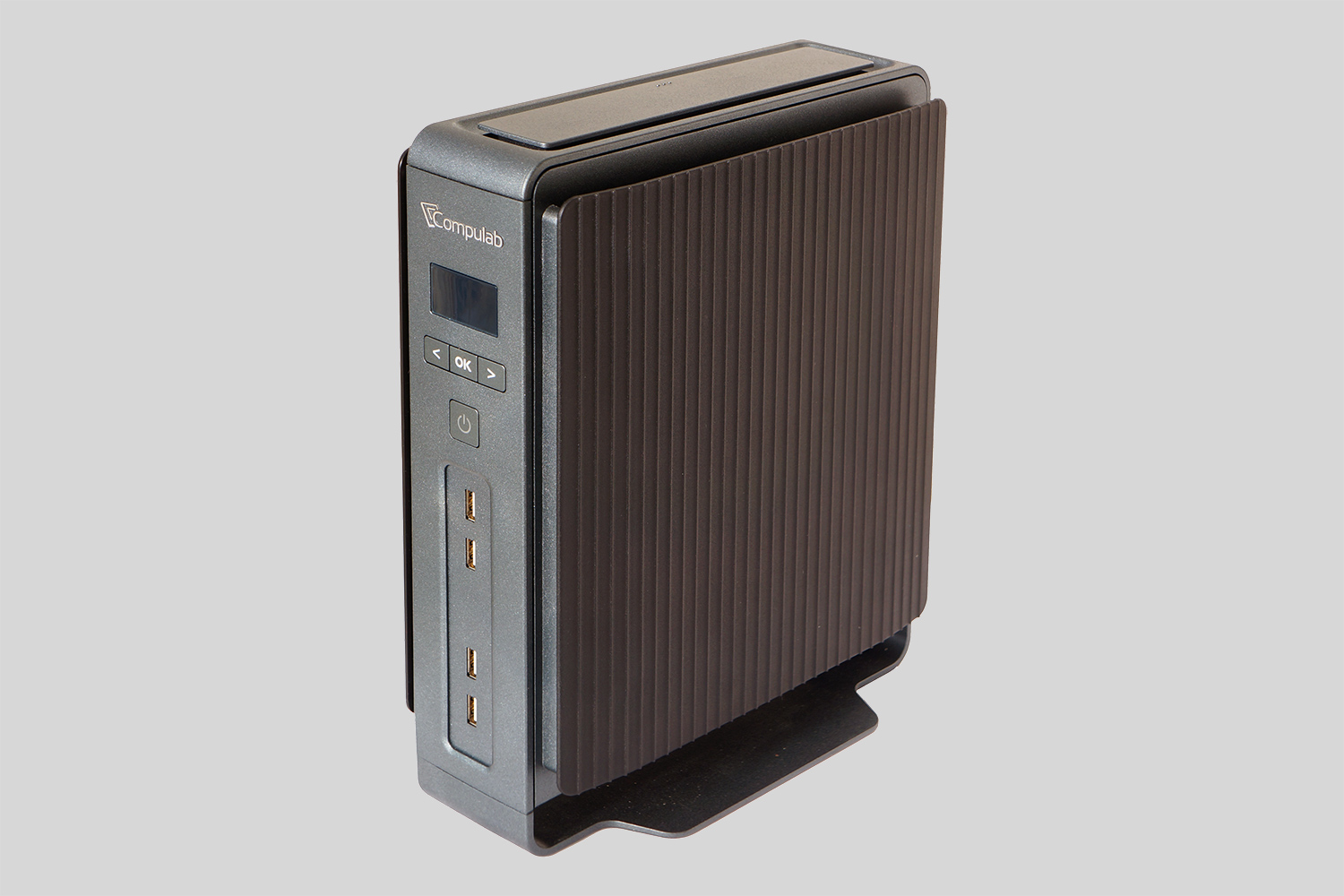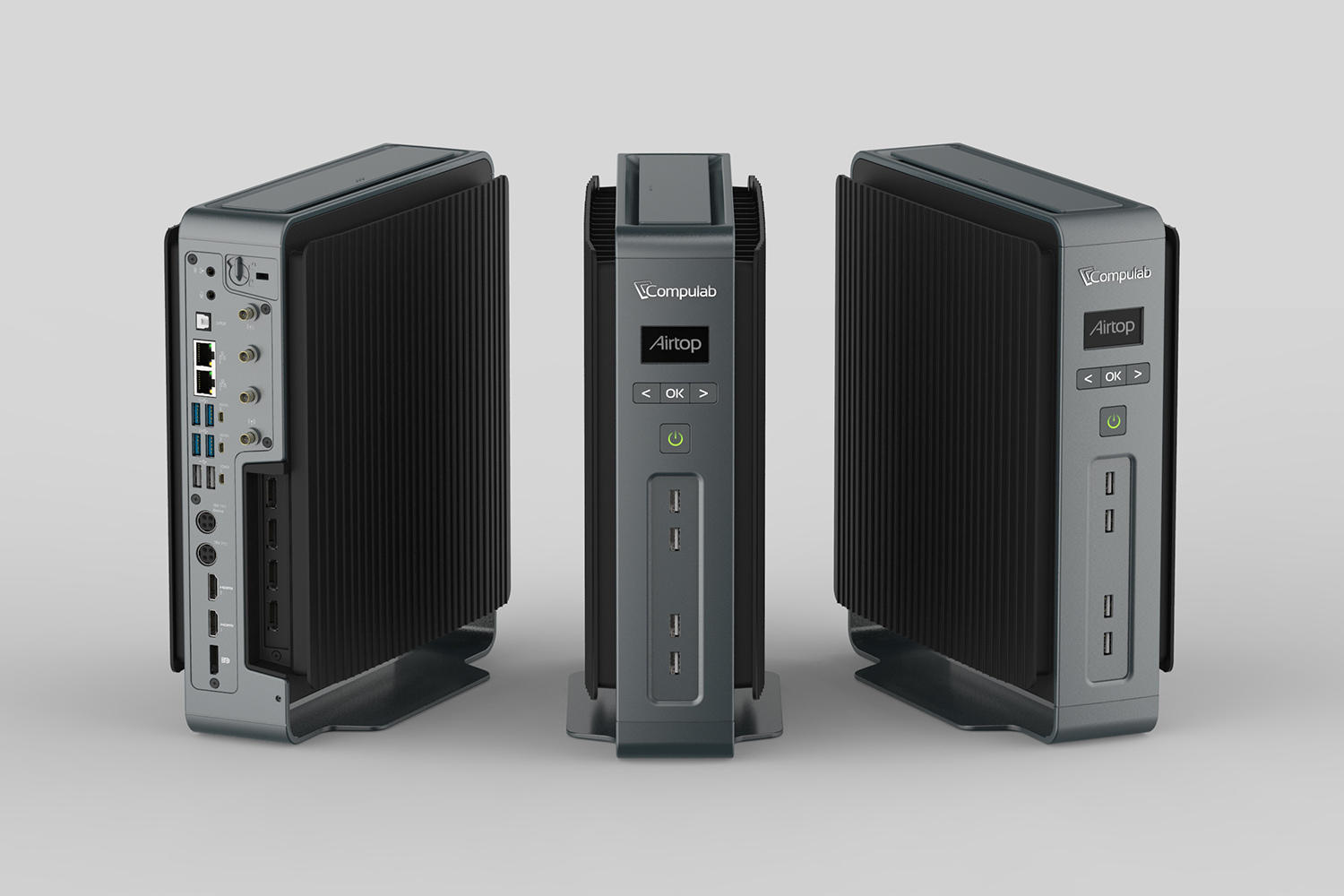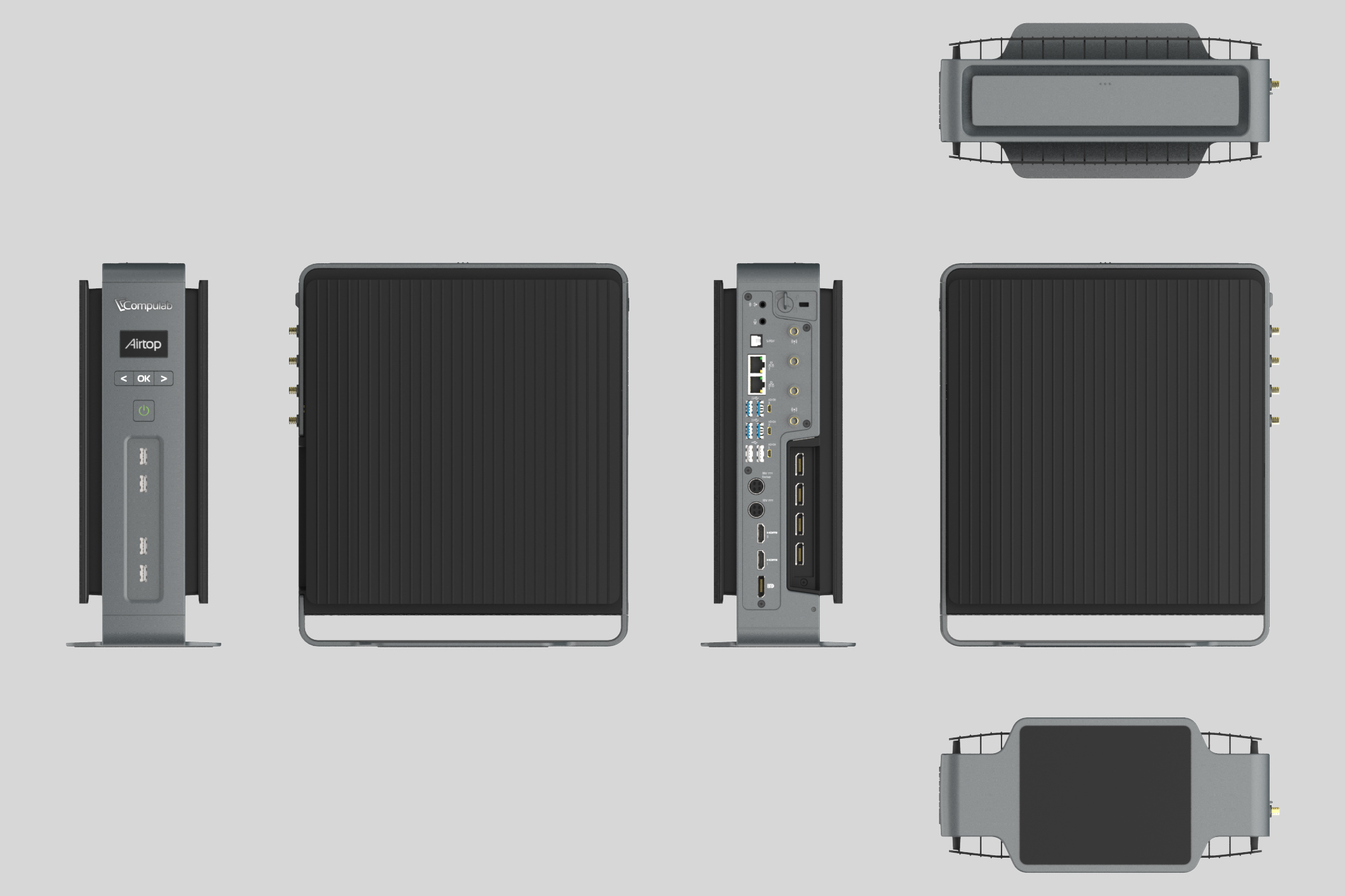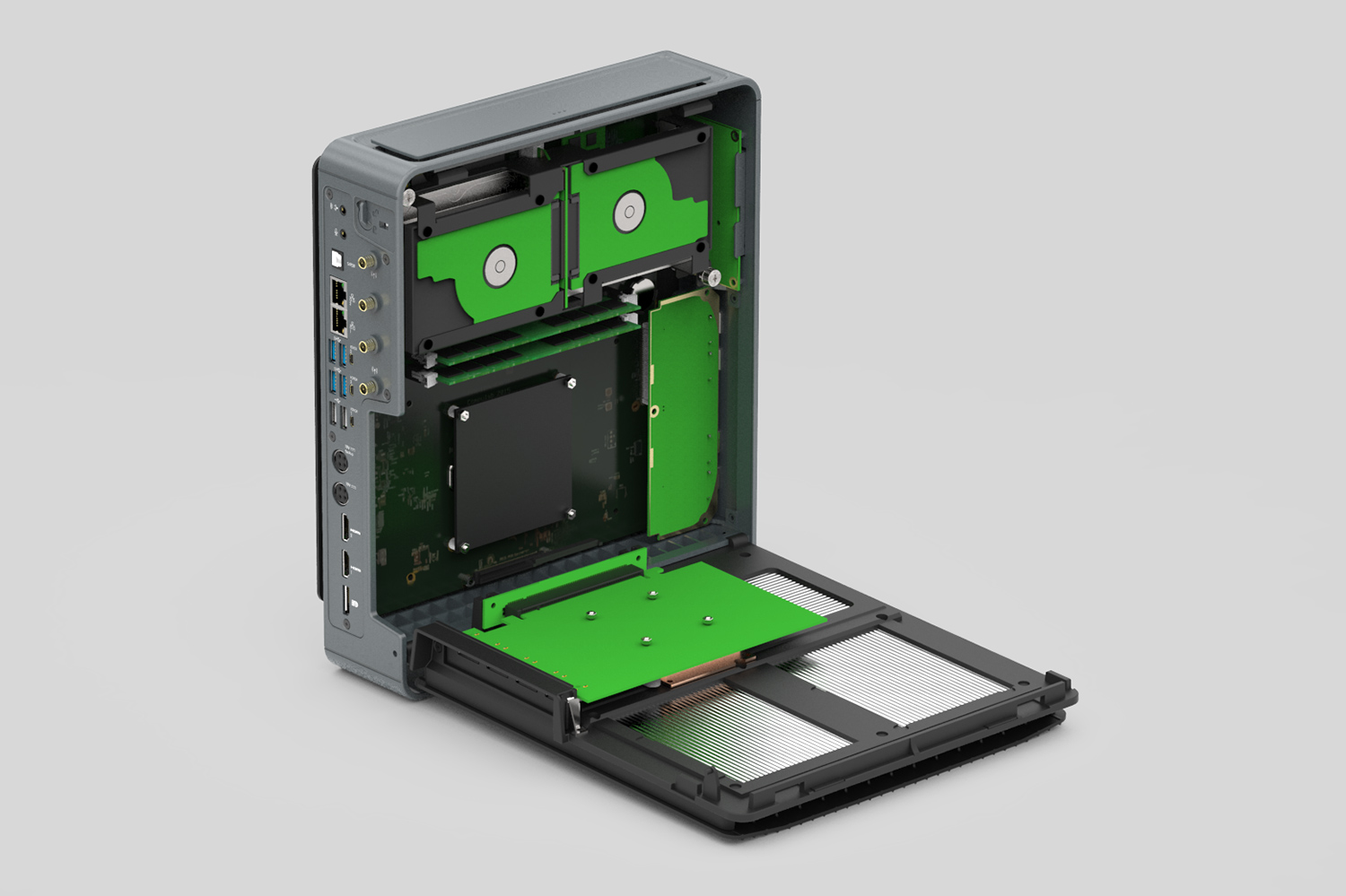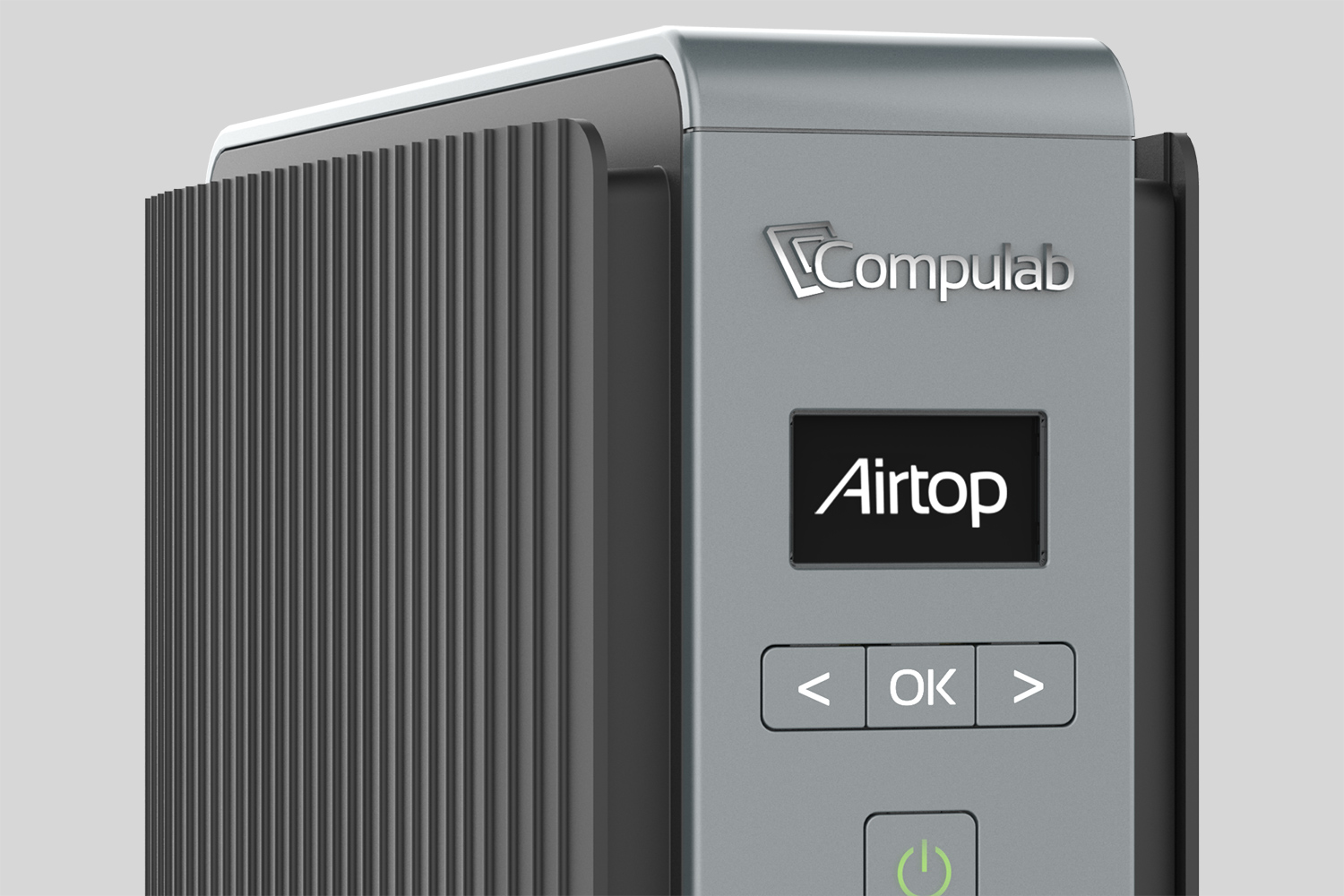Compulab has built a new gaming/server PC that is fanless, and as you might expect, it’s completely silent. We’re told it’s capable of dissipating as much as 200W, which is ten times more than the average fanless PC system.
It does this using a number of flat heat pipes, stacked on top and connected to one another. This means that the heat from the CPU and other warm components is quickly spread away from the core and drawn to the most exterior pipes, and is thereafter transferred to a very large aluminum heatsink. Natural convection and cleverly located air channels then push air over that heatsink, allowing it to be passively cooled.
Of course even with all of this innovation you aren’t going to put twin Xeon CPUs and quad-SLI Titan X’s in there, but there are some quite hefty hardware configurations that would make this a great mid-range gaming solution, or a powerful server in the right hands.
There are several different configurations for the Airtop, named W, G, S, and DIY, with the former three having preset hardware while the last of these, DIY, lets you customize the components (as per FanlessTech).
The Airtop-W is designed as a workstation, with an Intel Xeon Processor E3 and a full-size Nvidia Quadro M4000 graphics card. The Airtop-G offers some more gaming-oriented hardware, with an Intel Core-i7 and an Nvidia GTX 950, while the Airtop-S packs server components, including an Intel Xeon E3 CPU, 32GB of ECC RAM and four hard drives in a RAID configuration.
With the DIY system, buyers will get a choice of all of the above hardware, as well as options for connectivity like additional Ethernet ports, USB connectors, Wi-Fi controllers, and storage options.
Despite all the options available though, the most the system will ever weigh is seven kilograms (15.4lbs) and it’s just 10 × 4 × 11.8 inches (L × W × H).
It’s not cheap though. The DIY rig starts at $1,128 with just the motherboard, chassis, and cooling system included. The Gaming setup is just shy of $2,000 while the big workstation machine will cost you at least $3,000.

